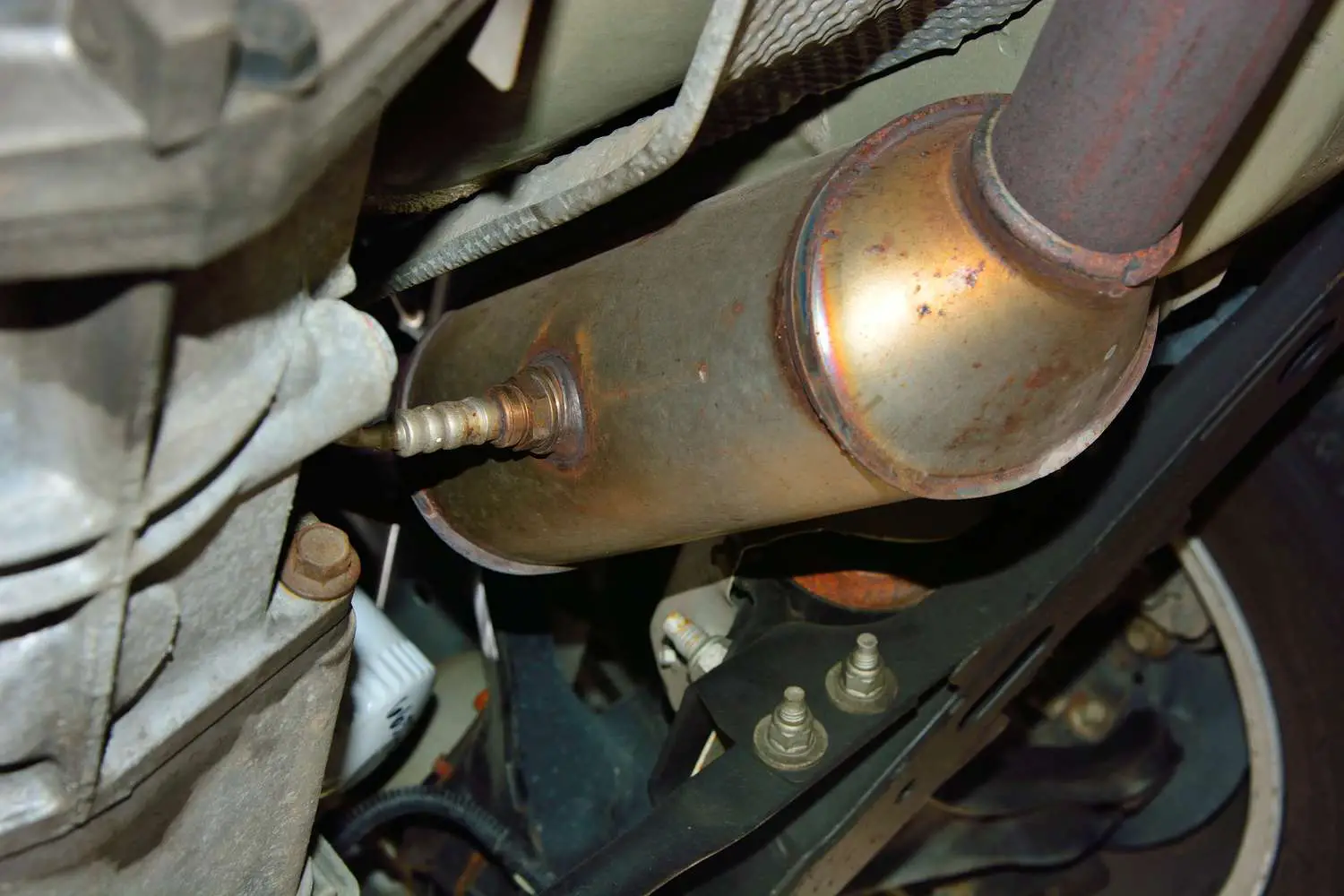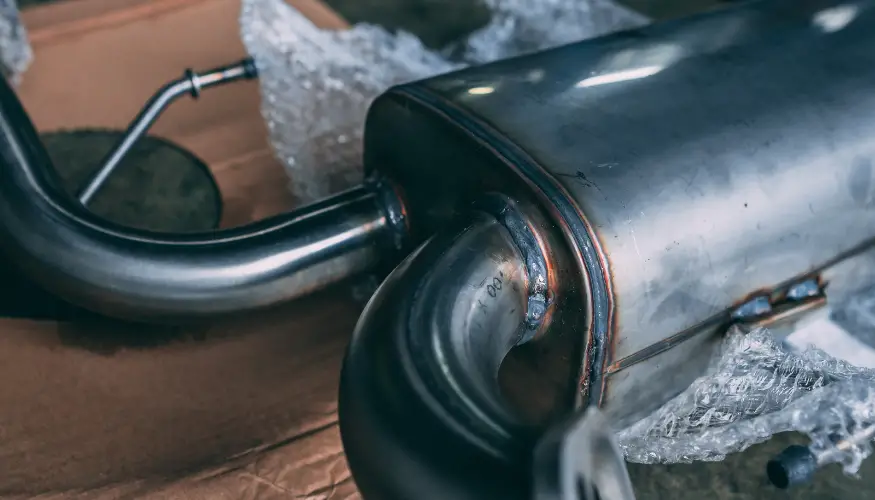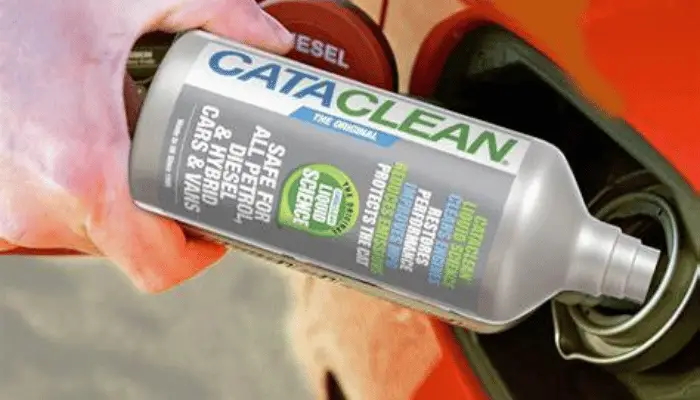- How to Clean Car Carpets Quick and Easy - July 10, 2024
- Can You Touch Up Clear Coat? Yes and No (Here’s Why) - November 25, 2023
- How To Wax A Car By Hand: A Comprehensive Guide - November 14, 2023
Last Updated on September 5, 2023 by Chase Manhattan
The catalytic converter is a vital part of your vehicle, helping to clean exhaust emissions. It does so by converting harmful nitrogen oxides and hydrocarbons into less-harmful gases. But a dirty catalytic converter can be problematic. If you want to keep your car running well, you may need to clean it from time to time.
However, there is a question to ask before you start cleaning your car’s catalytic converter: do you plan on cleaning your catalytic converter while it’s still on the car, or will you need to remove it?
I’ll show you how to clean a catalytic converter without removing it first because maneuvering around the undercarriage of a car can be quite the task. However, I’ll first need you to understand how catalytic converters work.
Quick Navigation
How Do Catalytic Converters Work?
At the heart of their function lies a chemical process that transforms toxic pollutants, such as carbon monoxide, hydrocarbons, and nitrogen oxides, into less harmful substances like carbon dioxide, water, and nitrogen gas. As exhaust gases pass through the catalytic converter, they come into contact with a catalyst, typically made of platinum, palladium, or rhodium, which facilitates these chemical reactions without being consumed.
[How To Bypass an Evap Canister]
How To Clean Catalytic Converter Without Removing It
The best way to clean a dirty converter is inexpensive and doesn’t involve removing the catalytic converter; instead, it involves using a fuel additive that will also wash out the combustion chamber, the exhaust system, the fuel system, and the oxygen sensor. Do note that it won’t work for exhaust systems that have dirty or broken catalyst honeycombs. Here’s how to clean a catalytic converter without removing it:
1. Identify The Right Catalytic Converter Cleaner
Not all catalytic converter cleaners are made equal. You will want to make sure that you’re choosing one that is compatible with your car. Most notably, you want to make sure that you’re not putting a diesel compatible product inside your car if it runs on gasoline.
2. Read The Instructions Carefully
Most fuel additives have a specific dilution ratio that you’ll want to adhere to for the best results. In other words, most additives recommend you use them when you have a certain amount of fuel left.
3. Pour The Cleaner Into The Fuel Tank
Once you’ve verified you have the appropriate amount of fuel, go ahead and pour the cleaner into the fuel tank.
4. Drive Your Car Until Empty
You’ll want to drive your car until it’s empty so you know for sure that all of the cleaner has been run out of the gas tank. If you fill up your fuel tank prematurely, you may find that the cleaner has not had the chance to fulfill its full potential.
At this point, if your car is still suffering the signs of a clogged catalytic converter, it may be best to remove the catalytic converter to fully clean it.
How To Clean A Catalytic Converter
Manually cleaning a catalytic converter is a much more involved process, mainly reserved for those with a mechanical aptitude. If you’re up for the challenge, keep reading below. Here’s how to clean a catalytic converter:
[How to Fix a Rusty Exhaust Pipe]

1. Locate The Vehicle’s Catalytic Converter
While all catalytic converters are a part of a vehicle’s exhaust system, the exhaust system can vary in appearance and function, from model to model. In other words, you can occasionally remove the catalytic converter by itself but there is also a chance you’ll need to remove the whole exhaust system.
2. Prepare The Necessary Tools
The job will vary from car to car but to remove a catalytic converter to clean it, I recommend you have tools like:
- a wrench
- ppf (gloves, goggles or glasses)
- an automotive degreaser
- penetrating oil
[How To Test A Purge Solenoid Valve]
3. Place The Car on Jack Stands
First and foremost, be sure that you never leave a car lifted on a jack alone. Jack stands are an absolute necessity, not only to get the job done, but to do so safely. While you’re checking under the car to locate the vehicle’s catalytic converter, I recommend that you identify the four frame lift points present on most cars.
4. Remove The Oxygen Sensors
This is another thing that will vary from car to car. For some models, you may need to remove the whole exhaust system – or just a particular exhaust pipe – and for some, you won’t need to remove anything at all. Depending on your car, remove the oxygen sensor as necessary.
5. Loosen The Flange Bolts
The flange is the surface that holds the catalytic converter, or another exhaust pipe, to the rest of the exhaust system. You will need to loosen these first to give yourself enough room to maneuver the catalytic converter.
6. Remove The Catalytic Converter
Now that all of your extra exhaust components have been removed and loosened, you can remove the catalytic converter.
7. Inspect The Catalytic Converter
You’ll want to gently shake the catalytic converter to identify any rattling noises. If you hear loose parts inside of the cat, it’s likely that you will need to replace it.
8. Pressure Wash The Catalytic Converter
Carefully spray the inside of the catalytic converter with your pressure washer. Be mindful of directly spraying too much pressure inside of it, you can impair the catalyst system efficiency if you damage the internal components.
9. Soak The Catalytic Converter
Next, you’ll want to fill a bucket with some warm water and your catalytic converter cleaner of choice. Your pressure washer will remove most loose material, but the cleaning agents in catalytic converter cleaner will go to work over time to remove any stubborn stains.
Read next: Best Undercarriage Cleaner
10. Blow Dry The Catalytic Converter
I prefer to use compressed air to dry the catalytic converter. It does a much better job, and is much faster than other methods.
11. Reinstall the Oxygen Sensor, Catalytic Converter, and The Rest of The Exhaust System
That’s it! Your catalytic converter is as clean as it can be. Let’s hope you won’t run into any more problems.
[How To Clean Purge Solenoid Valve]

Signs of A Clogged Catalytic Converter
It’s important to understand the signs of a clogged catalytic converter because sometimes it’s enough to clean a catalytic converter, but other times you’ll need to replace it.
The signs of a clogged catalytic converter are:
- a check engine light
- engine misfiring
- exhaust smoke
- failed emission tests
- reduced gas mileage
[Why Driving With A Bad Purge Valve Is A Bad Idea]
Check Engine Light
An illuminated check engine light is often the first sign of a catalytic converter issue. Fortunately, though, you can take your car to a local auto parts store, like AutoZone, to check the error code.
Car’s Engine Misfires
A misfire is another common sign of a clogged catalytic converter. The combustion process involves both taking in air and pushing out harmful gasses so when your catalytic converter is clogged, this is interrupting the efficiency of this process; The carbon deposits inside of the catalytic converter prevent the exhaust gases from efficiently leaving the system which directly effect the engine’s performance.
Exhaust Smoke
While not directly a sign of a clogged catalytic converter, exhaust smoke can be a sign of an internal oil leak, damaged piston rings or valve seals which will absolutely clog the catalytic converter over time as burning oil increases the rate at which your catalytic converter develops carbon build up.
Failed Emissions Test
While your check engine light will usually illuminate in the case of a clogged catalytic converter, this warning light is not entirely foolproof. For example, a slightly clogged catalytic converter may not be enough to trigger a warning light but is enough to fail an emission test.
Poor Fuel Efficiency
Your car’s fueling system is reliant on many things to function correctly, one of these being appropriate air flow through the system to maintain correct levels of fueling. If this balance, known as the air fuel ratio, is disrupted it’s likely to cause your car to lose efficiency by dumping more fuel into the system, known as a state of richness, which is when the car is using too much fuel for the air that is available in the combustion process.
[Where The EVAP Canister Purge Valve is Located]
What Causes A Catalytic Converter To Get Clogged?
A catalytic converter can get clogged by many things, such as:
- an imbalanced fuel/air mixture
- bad o2 sensors
- damage to the catalytic converter
What To Avoid When Cleaning a Catalytic Converter
Avoid Harsh Chemicals
Do not soak the catalytic converter in dissolving gel like Drain-o, bleach, or non-automotive safe corrosive chemicals.
Avoid Gas Tank Additives
Avoid using any “homemade” remedies to clean a catalytic converter. These remedies include adding paint thinner, lacquer, or other miscellaneous substances to the fuel tank.
Avoid Forcefully Removing The Catalytic Converter
If you can’t remove your catalytic converter easily, you may be inclined to remove it forcefully. Do not modify or damage your catalytic converter when attempting to remove it.
FAQs
Does Catalytic Converter Cleaner Really Work
Yes, catalytic converter cleaner can work depending on the circumstances. If it’s a problem that can be easily solved with a cleaning, this is a good way to save money, but if you’re experiencing an issue stemming from mechanical faults the answer is no. You can clean a catalytic converter all you want but it will not solve the problem if there is a mechanical issue at hand.
Why Did My Car’s Catalytic Converter Fail
There are many reasons why a car’s catalytic converter will fail. Naturally, catalytic converters are made of precious metals that are subjected to extreme heat in an external shell that will not last forever.
How Does A Catalytic Converter Work
A car’s catalytic converter uses a combination of refined metals and a honeycomb catalytic filtration pattern to filter the gasses – including carbon monoxide – that are generated when the fuel enters the combustion chamber to be ignited by the spark plugs.
Can You Repair A Catalytic Converter
Typically the answer is no but you can occasionally run into a welded catalytic converter, which is a viable solution for when the catalytic converters external shell is damaged. Otherwise, it’s not possible to repair mechanical faults inside the catalytic converter and I suggest you consult a professional mechanic online, via phone, or in person.
What Tools Do You Need To Test a Catalytic Converter
A catalytic converter can be tested with a few things like:
-a back pressure gauge for a back pressure test
-a vacuum gauge for a vacuum test
-a laser thermometer for a temperature test

